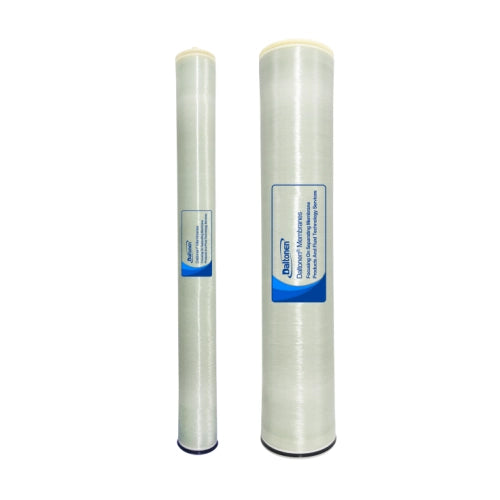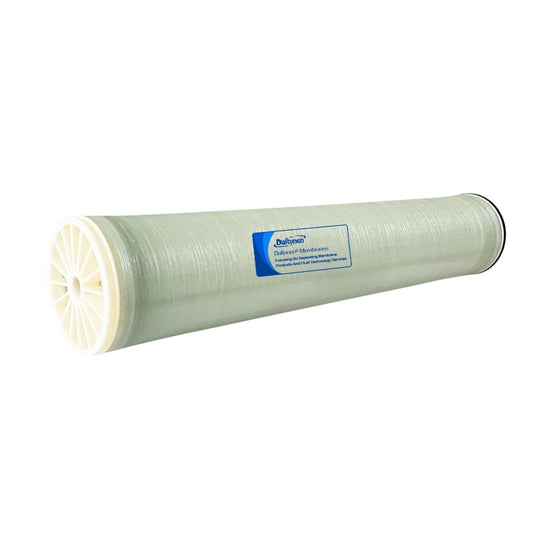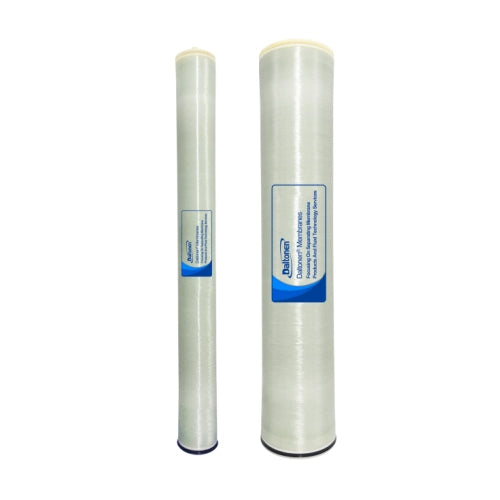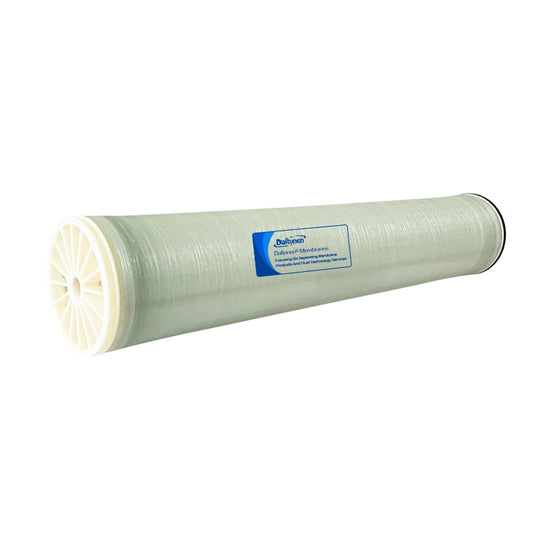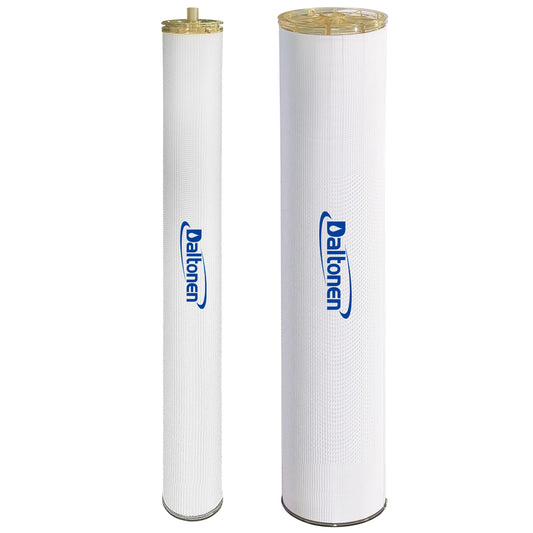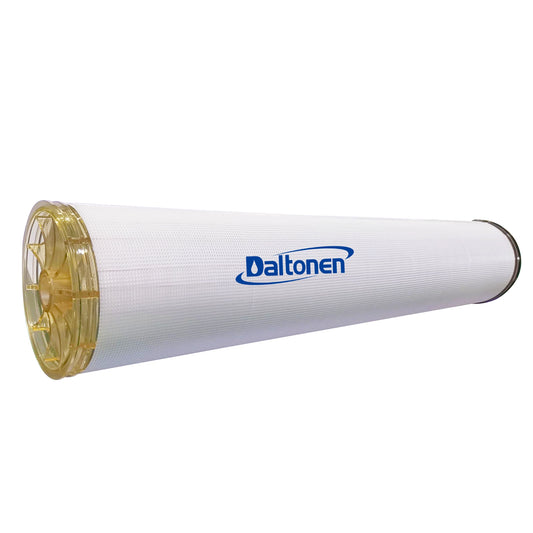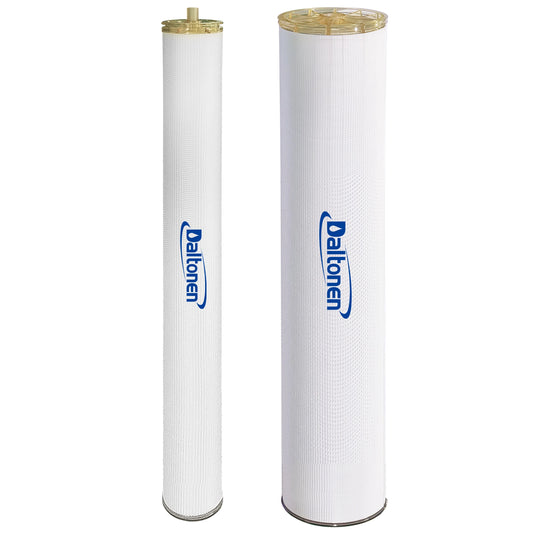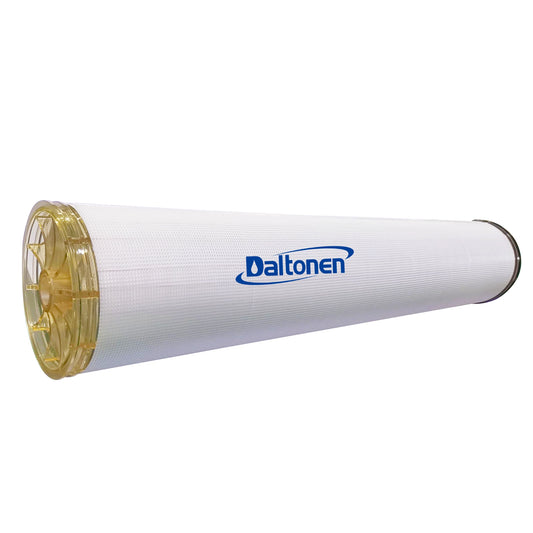Are the Dimensions of RO Reverse Osmosis Membranes Standardized?
Are the Dimensions of RO Reverse Osmosis Membranes Standardized?
1. Overview of RO Reverse Osmosis Membrane Dimensions
1.1 Introduction to Common Dimension Specifications
The dimensions of RO reverse osmosis membranes are diverse and not entirely standardized. Common specifications include 1812, 4021, 2521, 8040, and 4040. The meanings of these specifications are as follows:
- 1812: The membrane has a diameter of 1.8 inches (approximately 4.57 cm) and a length of 12 inches (approximately 30.48 cm). It is suitable for small-scale water treatment systems or experimental equipment, such as home water purifiers and laboratory water treatment systems.
- 4021: With a diameter of 4 inches (approximately 10.16 cm) and a length of 21 inches (approximately 53.34 cm), this specification is commonly found in non-standard equipment and is appropriate for medium-scale water treatment needs, like commercial water treatment and small-scale industrial water treatment.
- 2521: This membrane has a diameter of 2.5 inches (approximately 6.35 cm) and a length of 21 inches (approximately 53.34 cm). It is ideal for water treatment systems that require a compact design, such as those in space-limited industrial environments or for water treatment on ships.
- 8040: Featuring a diameter of 8 inches (approximately 20.32 cm) and a length of 40 inches (approximately 101.6 cm), this large membrane offers a significant treatment area and is suitable for large-scale water treatment projects, including industrial water treatment and seawater desalination.
- 4040: The membrane has a diameter of 4 inches (approximately 10.16 cm) and a length of 40 inches (approximately 101.6 cm). Compared to the 8040, it has a smaller diameter but the same length, making it suitable for water treatment needs ranging from medium to large scales.
1.2 Relationship Between Dimension Specifications and Performance
Different dimension specifications of RO reverse osmosis membranes exhibit significant performance differences, mainly in terms of water production rate, filtration precision, and desalination rate:
- Water Production Rate: Generally, membranes with larger diameters and lengths (such as the 8040) have higher water production rates and greater treatment capacities. For example, an 8040 membrane can produce approximately 1 ton of water per hour, while a 4040 membrane produces about 0.25 tons per hour. If the water production demand is less than 4 tons per hour, it is usually recommended to choose a 4040 reverse osmosis membrane; for demands greater than or equal to 4 tons per hour, an 8040 membrane is necessary.
- Filtration Precision: There are also differences in filtration precision among different specifications. Typically, smaller membranes (such as 1812 and 2521) are suitable for small-scale water treatment systems with less stringent filtration precision requirements, while larger membranes (such as 8040 and 4040) can provide higher filtration precision, making them suitable for large-scale water treatment projects with higher water quality requirements.
- Desalination Rate: The desalination rate is an important indicator of RO reverse osmosis membrane performance. Although different brands and models of membranes may have varying desalination rates, membranes of the same specification from different brands usually have similar performance in this regard. Generally, the desalination rate of RO reverse osmosis membranes for different substances is mainly determined by the structure and molecular weight of the substances. The desalination rate for multivalent ions and complex monovalent ions can exceed 99%, while for monovalent ions such as sodium, potassium, and chloride ions, the rate is slightly lower but still exceeds 98%. For organic compounds with a molecular weight greater than 100, the removal rate can reach 98%, but for those with a molecular weight less than 100, the removal rate is lower.

2. Basis for Dimension Selection
2.1 Matching Water Production Rate Demand
When selecting the dimensions of an RO reverse osmosis membrane, the water production rate is a crucial consideration. Different dimension specifications should be chosen based on the water production requirements to ensure the effective operation of the system. For example, for small-scale home water purifiers or laboratory equipment, where the water production demand is typically low, 1812 or 2521 membranes are sufficient. These membranes have a smaller water production capacity, which can meet the daily small water usage requirements. For medium-scale commercial water treatment or small-scale industrial water treatment, 4021 or 4040 membranes are more appropriate. They can maintain a certain treatment efficiency while saving space and energy. For large-scale industrial water treatment projects, such as chemical plants and power plants, as well as in the field of seawater desalination, large-dimension membranes like the 8040 are required. These membranes have a larger treatment area and higher water production rate, which can meet the high flow and high treatment capacity requirements. Specifically, an 8040 membrane has a water production rate of approximately 1 ton per hour, while a 4040 membrane has a rate of about 0.25 tons per hour. If the water production demand is less than 4 tons per hour, it is usually recommended to choose a 4040 reverse osmosis membrane; for demands greater than or equal to 4 tons per hour, an 8040 membrane is necessary.
2.2 Dimension Recommendations for Different Application Scenarios
In different application scenarios, the selection of RO reverse osmosis membrane dimensions also varies. For home water purifiers, due to space and cost limitations, smaller specifications such as 1812 or 2521 are typically chosen. These membranes are not only compact in size but also meet the basic water usage requirements of a household. In commercial water treatment, such as in restaurants and hotels, 4021 or 4040 membranes are more ideal choices. They can ensure water quality while providing sufficient water volume to meet the operational needs of commercial activities. For industrial water treatment, especially in industries with extremely high water quality requirements, such as electronics and pharmaceuticals, 8040 or 4040 membranes are more suitable. These membranes can provide high-purity water, ensuring the smooth progress of the production process. In the field of seawater desalination, the 8040 membrane is highly favored due to its large treatment area and high desalination rate. Through the adoption of RO membrane technology and system configuration, seawater desalination projects can efficiently convert seawater into freshwater, meeting the needs of agricultural irrigation, industrial production, and residential drinking water.
3. Industry Standards and Dimension Specifications
3.1 Overview of Domestic Standards
In China, the standards for RO reverse osmosis membranes are mainly managed by the National Standardization Technical Committee for Separation Membranes. For example, the national standard "Test Methods for Reverse Osmosis Membranes" (GB/T 32373-2015) was released on December 31, 2015, and implemented on June 1, 2016. This standard specifies the test methods for the thickness uniformity of flat reverse osmosis membranes, desalination rate, water flux, integrity of the desalination layer, and pressure resistance, and is applicable to the testing of flat reverse osmosis membranes. Other forms of reverse osmosis membranes may refer to these methods for execution. Additionally, there are standards such as "Spiral-Wound Polyamide Composite Reverse Osmosis Membrane Elements" (GB/T 34241-2017), which provide technical specifications and quality assurance for the production and application of RO reverse osmosis membranes.
3.2 International Standards for Reference
Internationally, the standards for RO reverse osmosis membranes mainly refer to those of the American Society for Testing and Materials (ASTM) and the International Organization for Standardization (ISO). For example, ASTM D4516 specifies the test methods and performance requirements for reverse osmosis membrane elements, including the testing methods for key performance indicators such as water production rate, desalination rate, and water flux. ISO 11465 specifies the dimensions and tolerances of reverse osmosis membrane elements, ensuring their interchangeability and compatibility. These international standards provide a unified reference for product quality and technical specifications in the global RO reverse osmosis membrane market, promoting international trade and technical exchanges.

4. Non-Standardized Dimensions
4.1 Special Customization Needs
In specific application scenarios, the dimensions of RO reverse osmosis membranes may need to be specially customized to meet particular requirements. For example, in some special industrial production processes, it may be necessary to customize RO reverse osmosis membranes with special shapes or dimensions to fit specific equipment or process requirements. According to the case of Visteck Technology, they undertake various custom OEM/ODM orders and have a professional technical design team and advanced production equipment.
They can design and produce custom RO membranes according to the specific requirements of customers. As shown in the table below, they have customized several non-standard dimensions of RO membranes, including 1610-100G, 1810-200G, and 2408-100G, which differ from standard RO membranes in both size and performance to meet the special needs of customers.
| Custom Dimension | Application Scenario |
| 1610-100G | Special small-scale water treatment equipment |
| 1810-200G | Medium-sized custom water treatment system |
| 2408-100G | Large-scale industrial custom water treatment |
Furthermore, certain specially designed reverse osmosis membranes can efficiently remove specific heavy metal ions, providing strong support for drinking water safety. For example, when treating water sources containing specific pollutants, it may be necessary to customize RO membranes with special filtration performance to improve the removal efficiency of these pollutants. Such customization needs usually come from industries with special water quality requirements, such as electronics, pharmaceuticals, and food and beverage, which have strict standards for water purity and the content of specific pollutants. Therefore, customized RO reverse osmosis membranes are needed to meet the water quality requirements of their production processes.
4.2 Market Impact of Non-Standard Dimensions
Although non-standard dimensions of RO reverse osmosis membranes are relatively less applied in the market, their existence has an important impact on the market. Firstly, non-standard RO membranes can meet the special needs of specific customers, thereby expanding the application range of RO reverse osmosis membranes. For example, in some special industrial fields, such as chemical and pharmaceutical industries, the requirements for water treatment are extremely high, and standard-sized RO membranes may not meet their specific process requirements. Non-standard RO membranes can provide more precise and efficient water treatment solutions, thus promoting the development of these industries.
Secondly, the production of non-standard RO membranes poses higher technical and innovative requirements for enterprises. Companies need to have strong research and development capabilities and production strength to design and produce non-standard RO membranes according to the special needs of customers. This encourages enterprises to continuously increase their investment in research and development and technological innovation, enhancing their competitiveness. For example, Visteck Technology, with 10 years of custom membrane experience, has accumulated various information and exclusive resources in the RO membrane industry, such as supply chain, technical production, and professional knowledge, becoming a professional manufacturer of high-end water purifier RO membrane customization.
Moreover, the existence of non-standard RO membranes also has a certain impact on the market competition pattern. Since non-standard RO membranes usually have higher technical barriers and customization costs, there are relatively fewer enterprises that can produce such products. This allows enterprises with relevant technologies and production capabilities to occupy a certain market share in the non-standard RO membrane market and obtain a higher profit margin. However, this may also lead to market monopoly phenomena, which is not conducive to fair market competition. Therefore, it is necessary to strengthen industry supervision and encourage technological innovation to promote the healthy development of the non-standard RO membrane market.

5. Conclusion
Through the detailed analysis of the dimensions of RO reverse osmosis membranes, the following conclusions can be drawn:
- The dimensions of RO reverse osmosis membranes are not entirely standardized, with common specifications including 1812, 4021, 2521, 8040, and 4040. Membranes of different dimensions have significant differences in performance and application scenarios.
- When selecting the dimensions of an RO reverse osmosis membrane, the water production rate is a key consideration. Different dimension specifications should be chosen based on the water production requirements. For example, for water production demands less than 4 tons per hour, it is usually recommended to choose a 4040 reverse osmosis membrane; for demands greater than or equal to 4 tons per hour, an 8040 membrane is necessary.
- In different application scenarios, the selection of RO reverse osmosis membrane dimensions also varies. For home water purifiers, smaller specifications such as 1812 or 2521 are typically chosen; for commercial water treatment, 4021 or 4040 specifications are suitable; for industrial water treatment and seawater desalination, large-dimension specifications like the 8040 are required.
- In China, the standards for RO reverse osmosis membranes are mainly managed by the National Standardization Technical Committee for Separation Membranes, such as "Test Methods for Reverse Osmosis Membranes" (GB/T 32373-2015) and "Spiral-Wound Polyamide Composite Reverse Osmosis Membrane Elements" (GB/T 34241-2017). Internationally, the standards mainly refer to those of the American Society for Testing and Materials (ASTM) and the International Organization for Standardization (ISO), such as ASTM D4516 and ISO 11465.
- Special customized dimensions of RO reverse osmosis membranes have important value in specific application scenarios, as they can meet the special needs of specific customers and expand the application range of RO reverse osmosis membranes. The production of non-standard RO membranes poses higher technical and innovative requirements for enterprises and also has a certain impact on the market competition pattern.
